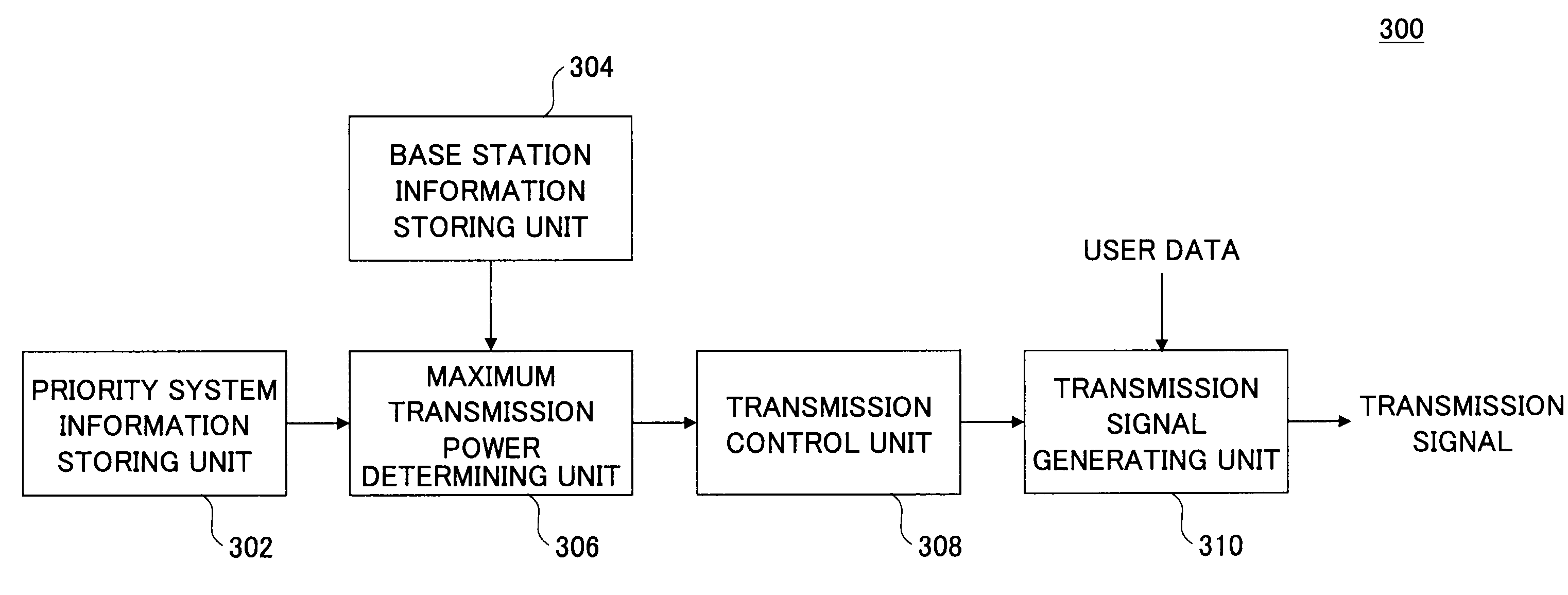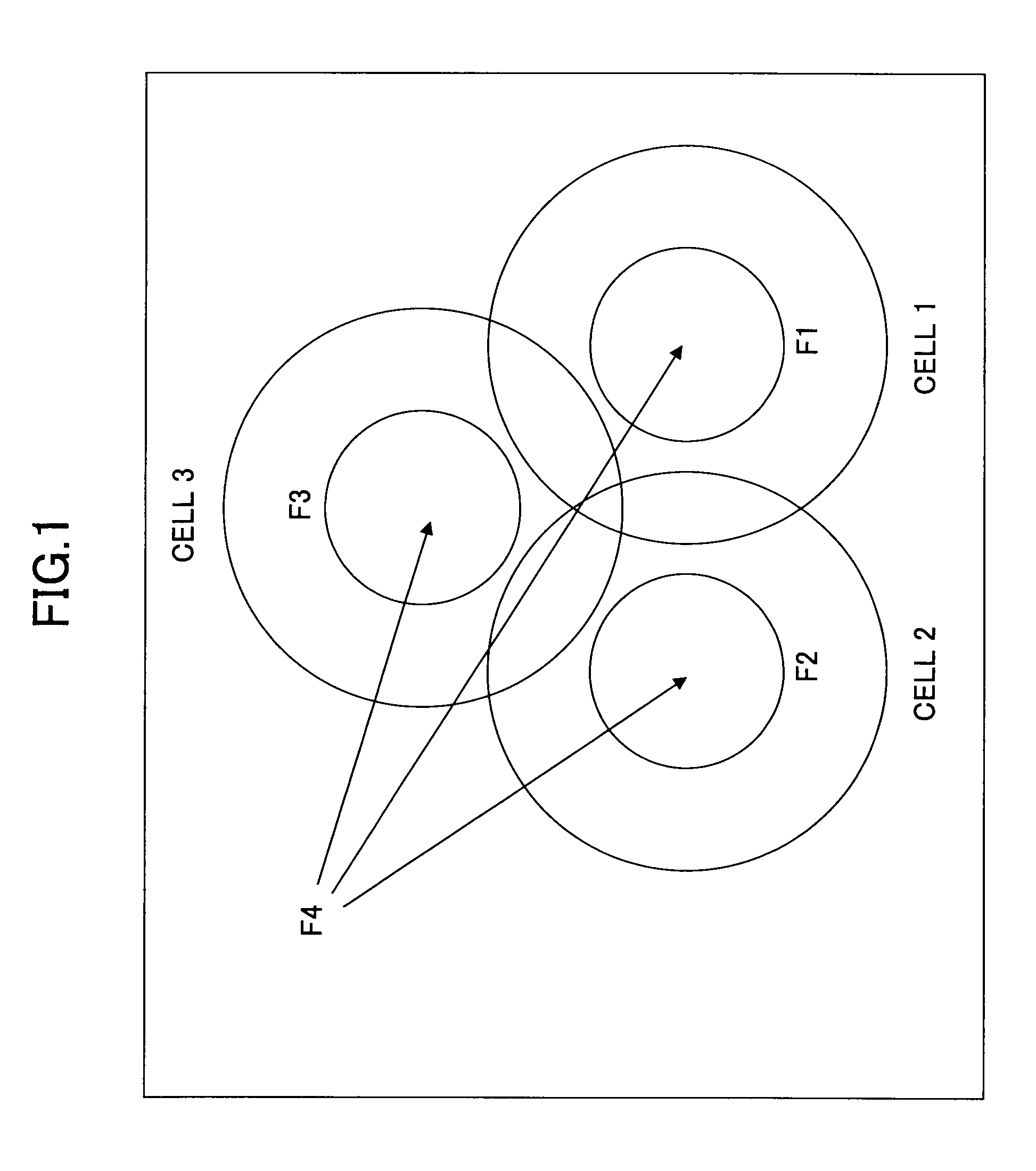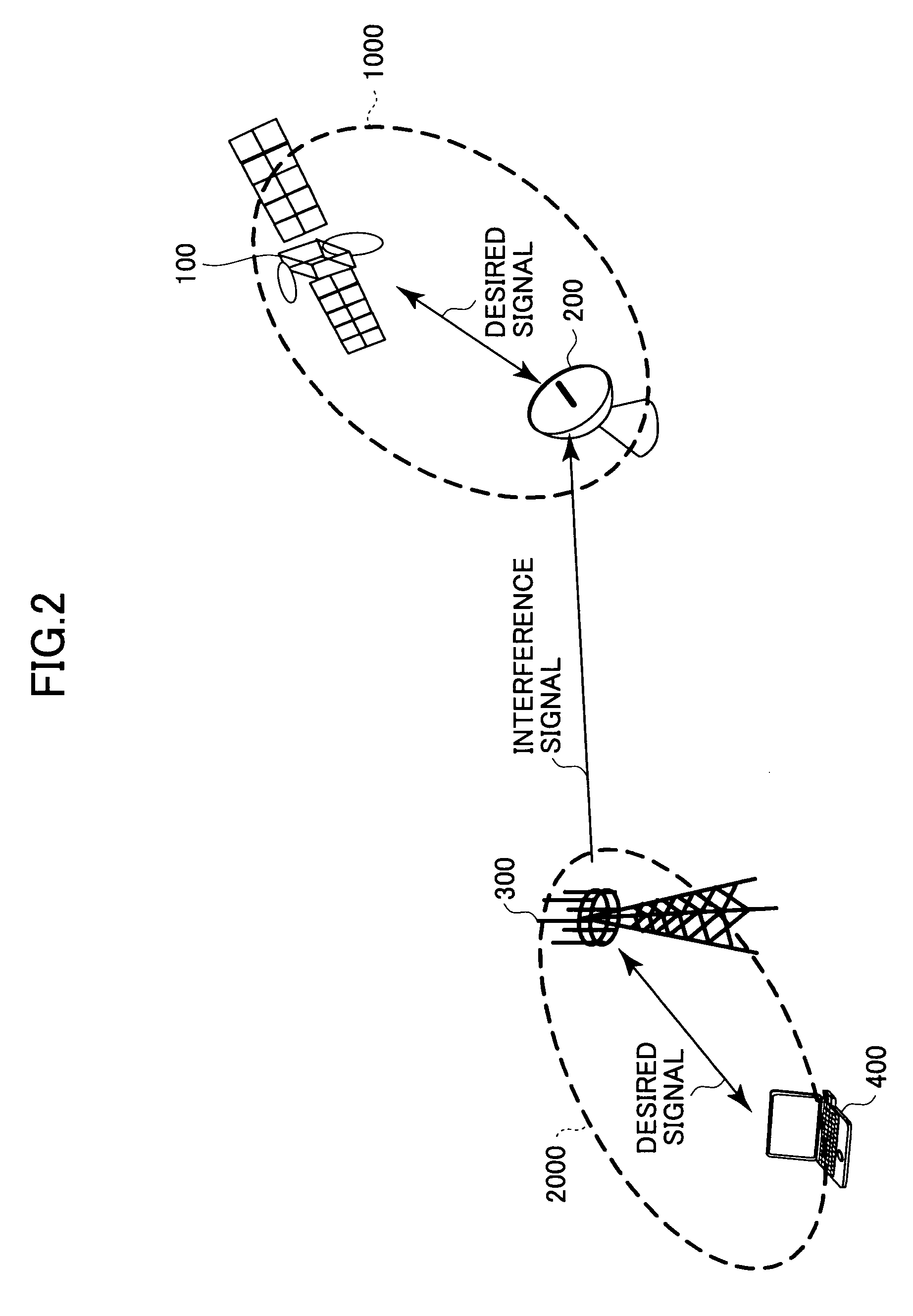Base station, receiving device, mobile terminal, and frequency sharing method
a technology of base station and receiving device, applied in the field of wireless communication systems, can solve the problems of difficult to improve frequency use efficiency, difficult to apply the first method to a communication system, and problems in the above-referenced technology
- Summary
- Abstract
- Description
- Claims
- Application Information
AI Technical Summary
Benefits of technology
Problems solved by technology
Method used
Image
Examples
first embodiment
[0042]A wireless communication system according to a first embodiment of the present invention is described below with reference to FIG. 2.
[0043]A wireless communication system 2000 of this embodiment is used in the same area as and / or an area close (adjacent) to that where a wireless communication system 1000 is used. Also, as shown in FIG. 3, the wireless communication system 2000 uses the same frequency band as and / or a frequency band close (adjacent) to that used by the wireless communication system 1000.
[0044]In this embodiment, the wireless communication system 1000 represents an existing wireless communication system and is given priority over the wireless communication system 2000. In the example shown in FIG. 2, the wireless communication system 1000 is represented by a satellite broadcasting system and the wireless communication system 2000 is represented by a mobile communication system.
[0045]The wireless communication system 1000 includes a transmitting device 100 and a ...
second embodiment
[0070]A wireless communication system according to a second embodiment of the present invention is described below.
[0071]The configuration of the wireless communication system of this embodiment is substantially the same as that described with reference to FIG. 2. Also, the configuration of the base station 300 of this embodiment is substantially the same as that described with reference to FIG. 4.
[0072]In the first embodiment, the maximum transmission power is determined based on the distance between the receiving device 200 of the wireless communication system 1000 and the transmitting device of the base station 300 of the wireless communication system 2000. In practice, however, as shown in FIG. 7, the degree of influence exerted on the receiving device 200 of the wireless communication system 1000 by the transmitting device of the base station 300 of the wireless communication system 2000 varies greatly depending on, for example, the difference in height between the receiving de...
third embodiment
[0079]A wireless communication system according to a third embodiment of the present invention is described below.
[0080]The configuration of the wireless communication system of this embodiment is substantially the same as that described with reference to FIG. 2. Also, the configuration of the base station 300 of this embodiment is substantially the same as that described with reference to FIG. 4.
[0081]In the above embodiments, the maximum transmission power is determined based on the interference on the wireless communication system 1000 caused by a spurious signal.
[0082]However, there is a case where the influence of an out-of-band signal received by the receiving device 200 outside of the operating frequency band is greater than the influence of a spurious signal in the operating frequency band. Such influence by an out-of-band signal is called desensitization. The desensitization is a form of interference caused when a non-linear element of the receiving device 200 incorporates ...
PUM
 Login to View More
Login to View More Abstract
Description
Claims
Application Information
 Login to View More
Login to View More - R&D
- Intellectual Property
- Life Sciences
- Materials
- Tech Scout
- Unparalleled Data Quality
- Higher Quality Content
- 60% Fewer Hallucinations
Browse by: Latest US Patents, China's latest patents, Technical Efficacy Thesaurus, Application Domain, Technology Topic, Popular Technical Reports.
© 2025 PatSnap. All rights reserved.Legal|Privacy policy|Modern Slavery Act Transparency Statement|Sitemap|About US| Contact US: help@patsnap.com



